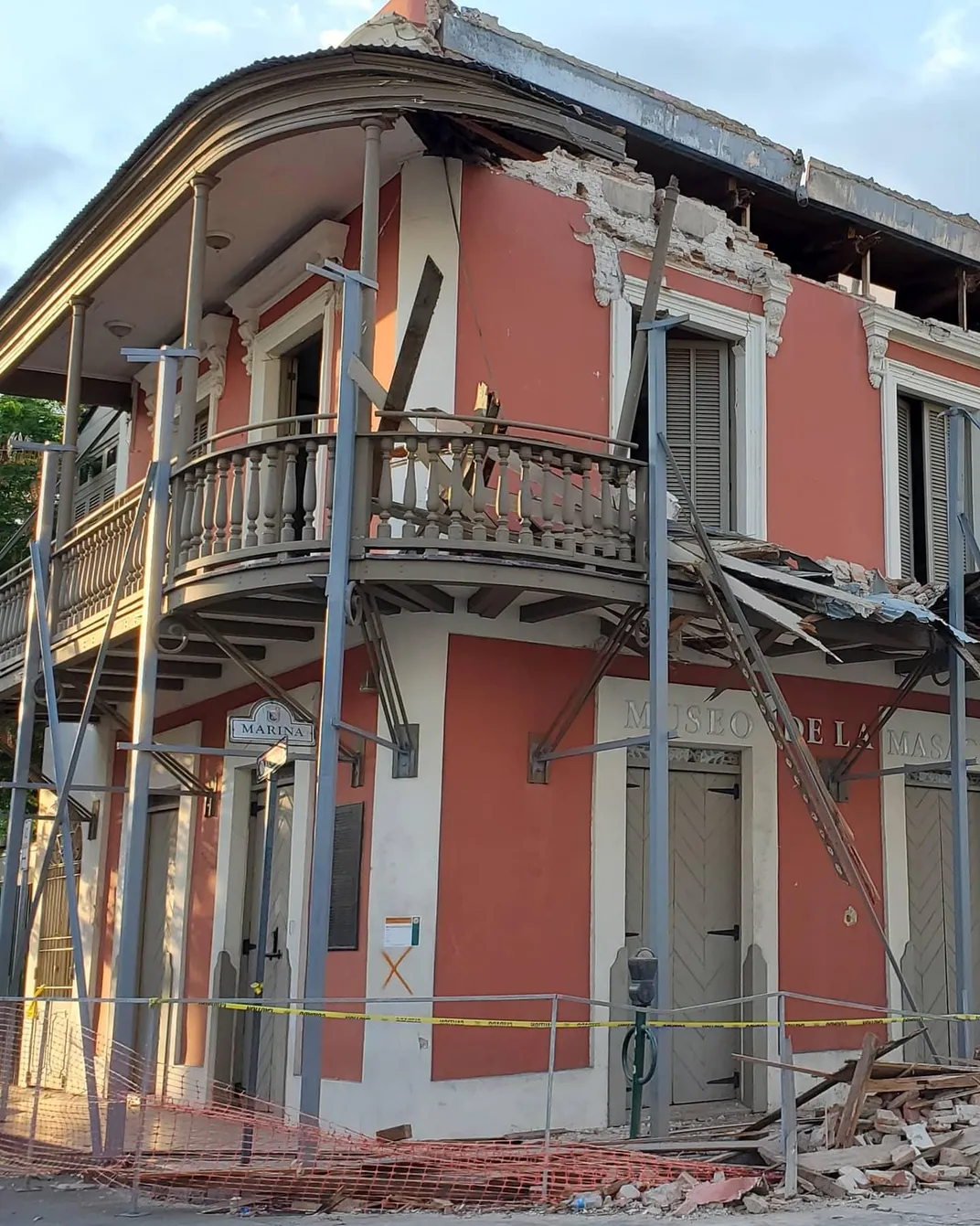5.4-Magnitude Earthquake Damages Puerto Rican Museums
The Museo de la Massacre de Ponce and Casa Paoli were among the buildings affected by Saturday’s tremors
/https://tf-cmsv2-smithsonianmag-media.s3.amazonaws.com/filer/b8/93/b893757f-2920-45d2-a03c-381ca88713f2/2020_may7_museomassacre.jpg)
A 5.4-magnitude earthquake struck southern Puerto Rico on Saturday, May 2, leaving 50 families in need of new housing and damaging buildings including the historic Museo de la Masacre de Ponce and Casa Paoli, reports Sarah Cascone for artnet News.
The tremors arrive at a critical point for the United States territory, which has experienced a string of natural disasters in recent years. This January, a 6.4-magnitude earthquake caused an island-wide blackout and left thousands in need of shelter, inflicting devastation on a community still recovering from Hurricane Maria. Now, as Puerto Rico battles the ongoing novel coronavirus pandemic, the earthquake marks “a crisis on top of another crisis,” Health Secretary Lorenzo González Vázquez tells Dánica Coto of the Associated Press.
Most of the damage occurred in Ponce, a coastal city in southern Puerto Rico. Photos posted on Facebook show the Museo de la Masacre de Ponce’s toppled wall and collapsed second-floor balcony. The museum—which commemorates a 1937 protest that resulted in the deaths of 19 civilians and two police officers— also suffered minor earthquake damage in January, El Universal reported at the time.
At the beginning of the 20th century, what is now the Museo de la Masacre de Ponce housed the local office of Puerto Rico’s Nationalist Party, which advocated for independence from the United States beginning in the 1920s. Today, the museum tells the story of the March 21, 1937, demonstration, detailing how police shot at a crowd marching in recognition of the anniversary of the 1873 abolition of slavery in Puerto Rico and in protest of the imprisonment of Nationalist leader Pedro Albizu Campos.
After the United States imposed its holidays on the territory, the Nationalist Party began celebrating holidays specific to Puerto Rico’s history, according to the museum. Though the 1937 march’s organizers requested an event permit from the city, the mayor revoked this permission at the urging of the island’s U.S.-appointed governor. When a crowd gathered, the Insular Police fired on them. In total, 21 people were killed, and more than 100 were injured.

The Museo de la Masacre de Ponce is located near the historic Casa Paoli, a house museum dedicated to opera singer Antonio Paoli, who was born in the Puerto Rican city in 1871. Paoli performed around the world and was known as “the king of tenors,” according to a website dedicated to the history of the tenor.
“Experts say that if this series of earthquakes continues, the four main walls of the building’s interior structure may collapse,” Casa Paoli director Nestor Murray tells artnet News in an email.
Another local museum, the Museo de Arte de Ponce, had closed after sustaining damage during the January earthquake. Per a press release, subsequent inspection found that the gallery’s collections were undamaged, and the structure of the building remained intact. The museum’s director, Alejandra Peña Gutiérrez, tells artnet News that Saturday’s earthquake did not cause further damage to the building.
Several aftershocks followed the earthquake on Saturday, including a 4.9-magnitude tremor, according to the Associated Press. Víctor Huérfano, director of Puerto Rico’s Seismic Network, tells the AP that such seismic activity is not unusual given the series of earthquakes that began in the area in late December..
“In the long run, it’s decreasing, but you can have peaks,” he said, adding that strong aftershocks are likely to continue.